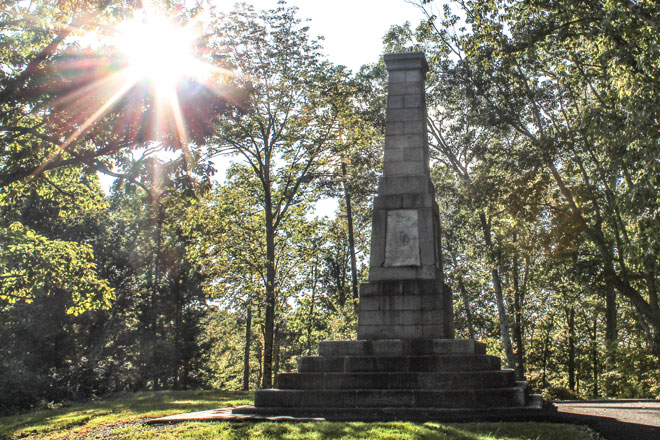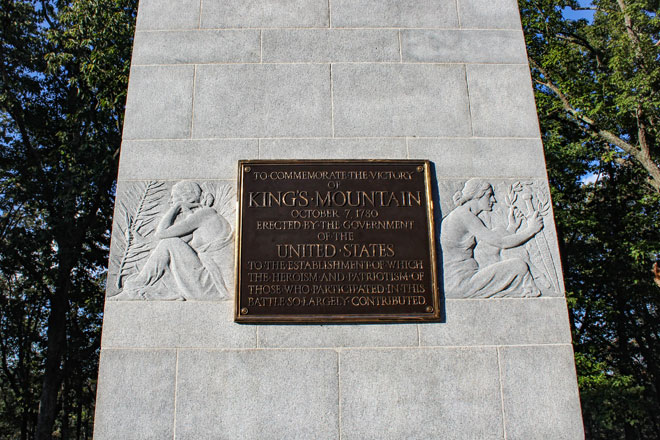Preserving the northern bobwhite alongside revolutionary history
By Casey Sill
Major Patrick Ferguson woke in the early morning hours of October 7, 1780 to the clear, unmistakable “bob-white, bob-white” calls of a bobwhite quail.
The Scottish born officer had recently been given command of a loyalist militia in South Carolina that was attempting to protect the British Army’s left flank against the onslaught of the American Revolution. As dawn broke on the 7th, he and his 1,100 men were camped at Kings Mountain, just south of the North Carolina border and nearly due west of Charlotte. The mountaintop was (and is) shaped like a boot print — Ferguson’s camp lie in the middle of the heel, at the highest point.
A dull, fall rain had sputtered to a stop just before daybreak, not long before the quail began their morning routine. Ferguson rose and exited his damp canvas tent, going about the usual business of the day.
Ferguson was a career soldier from a prominent family, like most officers of the time
His men nicknamed him “Bull Dog,” and in addition to his strategic objective, he also set about ensuring the local population remained loyal to the crown. Naturally, Ferguson’s intimidation of the surrounding farms and villages didn’t sit well with patriot militia leaders in the area, and frustrations came to a boiling point on the afternoon of the 7th.

At 3 p.m. the mountain’s boot heel was surrounded by 900 patriot militiaman, taking every man camped there by complete surprise. When the first volley was fired Ferguson mounted his white horse and attempted to rally the blindsided men.
In the 65-minute battle that followed, 290 loyalists were killed, including the lone British soldier involved in the engagement — 36-year-old Major Patrick Ferguson.
He was shot eight times, and later buried in an unmarked grave.
The Battle of Kings Mountain was one of the few major battles in the Revolution fought entirely by Americans, and marked a significant victory for the patriots. Thomas Jefferson called the battle “The turn of the tide of success.” Today the site is the home of Kings Mountain National Military Park, where in addition to preserving history, Quail Forever is working alongside the National Park Service and the South Carolina Department of Natural Resources to help restore northern bobwhite quail populations.
In 1780, quail populations across the American south were healthy and stable. Prehistoric quail density in North America was comparatively low, but the patchwork farms introduced by early settlers along with hardwood savannas that were often burned by native tribes long before the arrival of white settlers, made for ideal quail habitat. In the 240 years since the battle, agriculture and various land management practices have altered Kings Mountain quail numbers, as it has across the entirety of the bobwhite’s historic range. By restoring the historic woodlands and Piedmont prairie plant communities that existed during the time of the battle, the National Park Service, Quail Forever and numerous other partners are also restoring essential quail habitat.
Alex Scronce is a Wildland Fire Operations specialist based at Kings Mountain. His work takes him all across the Southeast, but Kings Mountain is his main focal point.
“The park was established in the 1930s, but there wasn’t much land management done at that time,” Scronce said. “We started a prescribed fire program in 2000, and that’s really begun to transform the landscape back to what it would’ve looked like at the time of the battle.”
The key factor for quail in a hardwood, oak savannah like Kings Mountain is a clear understory. When the ground level gets choked with brush it creates poor habitat. Opening that ground back up with fire allows quail to thrive.
The blueprint for Scronce’s work lies in the historical record of the battle. Detailed notes were kept about the appearance of the site at the time, and habitat actually played a big part in the battle itself.
Records describe Kings Mountain as having a large overstory of hardwoods with some mixed pine stands, and an understory made up of grasses like little and big bluestem. The patriot militiamen were very familiar with this landscape, and the clear understory allowed them to take the loyalists by surprise while also maintaining good visual contact with Ferguson’s camp.
“Documentation of the battle mentions how well the patriots could see on the battlefield,” Scronce said. “The men fired on the loyalists from all sides, using the trees as cover. The battle wasn’t fought in the traditional way people think of when they imagine the Revolutionary War — big lines of soldiers in single file, firing volleys at each other. ”
Scronce’s work at Kings Mountain is part of a large coalition of habitat restoration that will benefit much more than just quail in the long run. The same habitat that allows bobwhites to succeed is also positively impacting wild turkey, songbirds, fox squirrels, and much more.
“We’re seeing great improvements to biodiversity,” Scronce said. “Once you open that understory up, you get more invertebrates, better ground cover, all the things that allow more diverse species. It’s been really neat to see some of that.”
Scronce’s connection with Kings Mountain reaches far beyond a passion for habitat work. Among the rebels firing on Ferguson that afternoon were two brothers, Jacob and John Hoffman, local boys in their 20s who’d just recently joined a patriot militia in the area. Scronce is a direct descendant of the brothers.

“They weren’t big heroes or generals, just a couple of good ol’ boys who came up here ready to fight,” Scronce said. “Remembering that history is really important, and this habitat work helps keep that history intact. You can come here, look at the battlefield, and see what those people went through and endured.”
To experience the full weight of any historic place, you need sensory context. Written accounts can get you so far, but to really understand a place you need to stand in its midst. See, smell and hear what those who came before did — the musty aura of Independence Hall, or the sound of waves breaking on Omaha Beach.
At the boot heel of Kings Mountain, those sensory indicators are the sight of oak leaves rustling in the fall breeze, the feel of big bluestem on your fingertips and the whistle of a bobwhite across the ridge, so faint you almost feel like you imagined it.
That’s as close to time travel as we’ll ever get — and time travel isn’t possible at Kings Mountain without the northern bobwhite quail.
Casey Sill is Quail Forever’s public relations specialist.
This story originally appeared in the 2023 Summer Issue of the Quail Forever Journal. If you enjoyed it and would like to be the first to read more great upland content like this, become a Quail Forever member today!